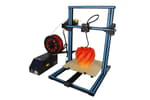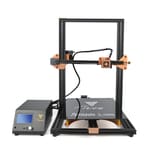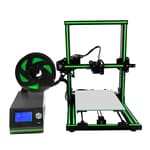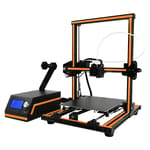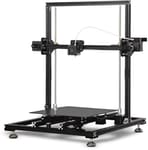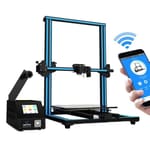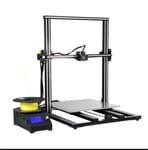You’re probably familiar with the Original Prusa i3. An outstanding 3D printer kit, its open-source nature led to an explosion of clones and variations across the market.
The original design was so good, in fact, that even some of the variations became popular in their own right. One such machine was the Creality CR-10 (which has now been upgraded to the CR-10S). It combined the best things of any other Prusa i3 clone — affordability and quality prints — with an exceptionally large build volume and easy assembly.
As you can imagine, it didn’t take long before CR-10 clones flooded the realm of 3D printing. They don’t differ much from the original, instead of being popular mostly for their significantly reduced prices.
Nevertheless, where differences exist, we point them out in this list of the most popular CR-10 clones. Feast your eyes upon the best Creality3D’s innovation has to offer as we make our way through the entire color spectrum, starting with the CR-10S itself.
Note that for each of the CR-10 3D printer clones in this article, the list of supported filaments is based on the max nozzle and print bed temperatures. That said, filaments like ABS are likely difficult for any of them to print with sans enclosure.
Additionally, unless otherwise stated, all of the following CR-10 clones are delivered as semi-assembled kits.
The shroud of uniqueness has fallen; begun the CR-10 clone race has…
| 3D Printer | Build Volume (mm³) | Layer Resolution (µm) | Max. Nozzle / Print Bed Temps (°C) | Market Price (USD) | Check Price |
|---|---|---|---|---|---|
| Creality CR-10S | 300 x 300 x 400 | 100 | 270 / 90 | 600 | |
| Tevo Tornado | 300 x 300 x 400 | 50 | 260 / 110 | 410 | |
| Anet E10 | 220 x 270 x 300 | 100 | 260 / 100 | 360 | |
| Anet E12 | 300 x 300 x 400 | 100 | 260 / 100 | 380 | |
| Tronxy X3S | 300 x 300 x 400 | 100 | 275 / 110 | 380 | |
| Geeetech A30 | 320 x 320 x 420 | 50 | 250 / 110 | 440 | |
| Alfawise U10 | 400 x 400 x 500 | 50 | 260 / 50 | 540 | |
| Raiscube R10 | 240 x 300 x 300 | 50 | 260 / 100 | 350 | |
| SainSmart x Creality CR-10S | 300 x 300 x 400 | N/A | 250 / 100 | 600 | |
Creality CR-10S
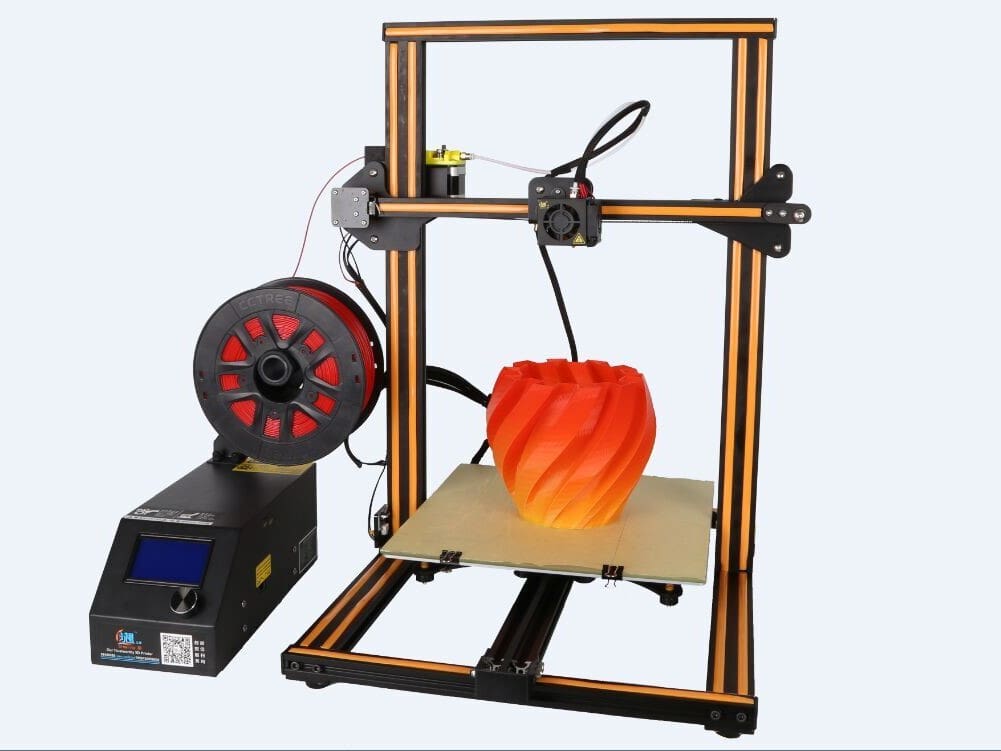
The one that started it all. Kinda. In fact the original CR-10 is a variation of the Original Prusa i3 MK2, albeit a more unique variation.
What was it about the CR-10 exactly that caught enough attention to spark a whole new wave of Prusa i3 clones? To quote our very own Creality CR-10 Review, it “looks slim, prints big”, and is the very image of “stark simplicity”. To be more specific, the CR-10 series are affordable large-format printers featuring uniform aluminum frames and offering above average print quality. And who can resist those stylish go-faster stripes?
With so much to offer, it’s no surprise so many companies are selling CR-10 clones.
The now standard CR-10S is the slightly upgraded version. Its primary advantages over the CR-10 are
- the dual Z screws supporting both ends of the X-axis rail,
- a filament sensor detecting when a spool of filament has ended, and
- a more capable motherboard, which is capable of pausing prints and recovering from power failures.
Like the CR-10, the CR-10S comes in three sizes, with three different print volumes. Next to the default 300 x 300 x 400 mm³ are models that come in 400 x 400 x 400 mm³ (the CR-10 S4) and 500 x 500 x 500 mm³ (the CR-10 S5). There’s also the CR-10 Mini, which has a print volume of 300 x 220 x 300 mm³. Note that pricing and availability vary between the different models.
Tevo Tornado
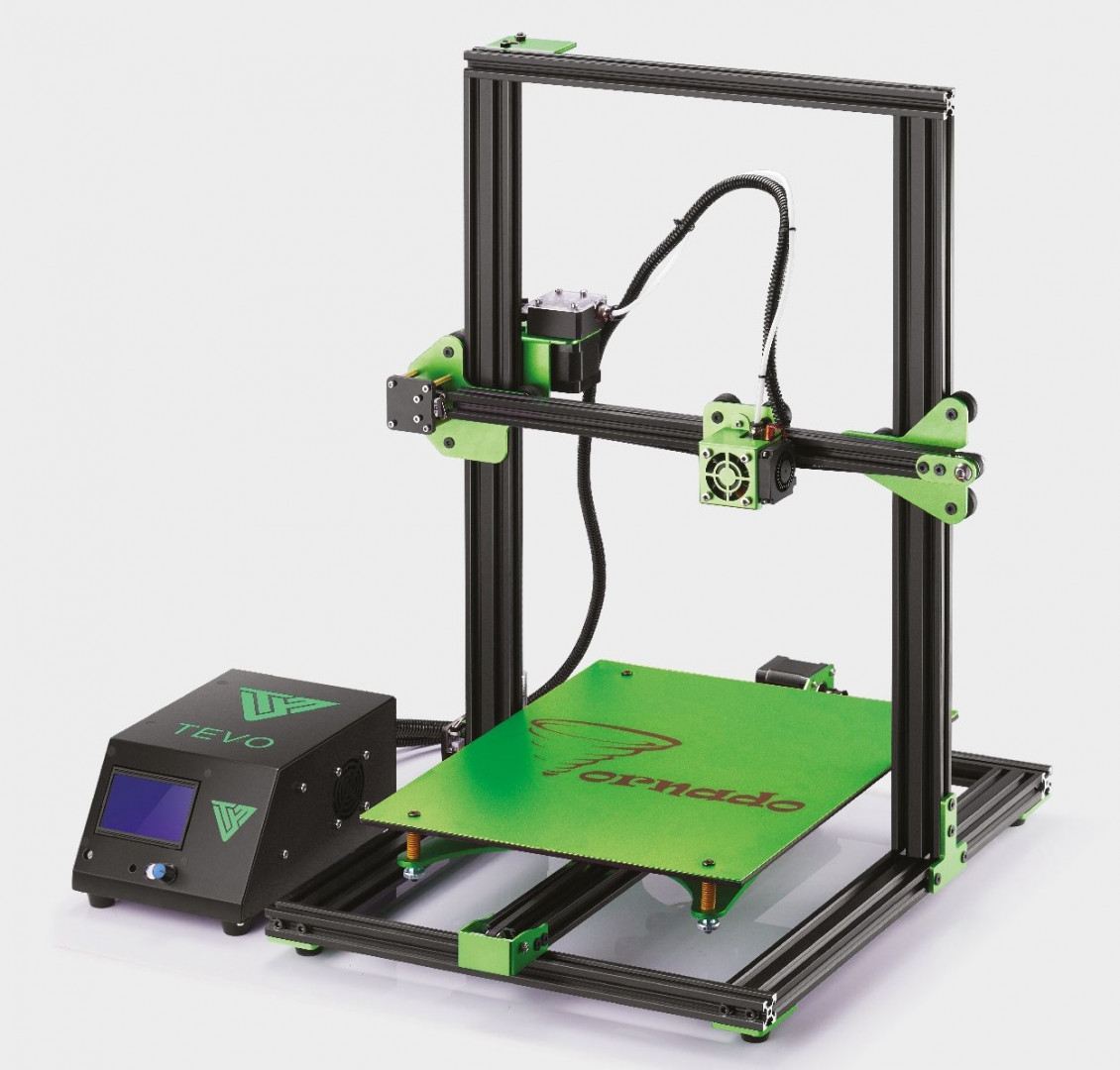
Another participant in the CR-10 clone race is the Tevo Tornado. This CR-10 clone offers the standard print volume of 300 x 300 x 400 mm³ as well as several other notable features. At the top of the list are dual Z screws and a powerful extruder from E3D’s Titan. The best part? All of that comes at a fraction of the price of the CR-10S.
Don’t Miss: TEVO Tornado Review – A Worthy CR-10 Challenger?
Anet E10

While at first glance this CR-10 clone looks almost exactly like the CR-10S, the Anet E10 has a few notable differences. First and foremost is the smaller build volume, a mere 220 x 270 x 300 mm³. But maybe you don’t need the 300 x 300 x 400 mm³ offered by the CR-10S, in which case the E10’s lower price tag is much more agreeable. Apart from size and price, this CR-10 clone has been reported to have a fan that cools too well. (Nothing that a little tape can’t fix.) And finally, if you’re just not into that bright orange, here’s a cool green to soothe the eyes.
Anet E12

The Anet E12 slightly larger, slightly more expensive CR-10 clone. It has the exact same print volume as the CR-10S but at two thirds the cost. Apart from being bigger and having an adjustable tension in the print bed belt, you can expect the E12 to share the same set of features as its little brother, including dual Z-axis stepper motors and screws.
Don’t Miss: Anet E12 3D Printer: Review the Specs
Tronxy X3S

The X3S is the only CR-10 clone in this list that doesn’t come partially assembled. And that isn’t the only way in which Tronxy cut some corners in order to provide an affordable 3D printer. As with its little brother, the X3, users report a rather grueling experience putting this CR-10 clone together due to missing instructions and a plethora of necessary tweaking. Despite that, the X3S is said to produce surprisingly high quality prints.
Geeetech A30

The Geeetech A30 is a truly unique CR-10 clone. Looking at its feature set, the only downside is its relatively weaker nozzle, which can reach a maximum temperature of only 250°C. Otherwise, this machine has only good things to offer, starting with an affordable price tag. Other advantages include an LCD touchscreen interface (the only one in this list) and the ability to connect through WiFi with Geeetech’s EasyPrint app. It also features filament detection, print resume, and auto-leveling — uncommon features among Creality CR-10 clones.
Alfawise U10
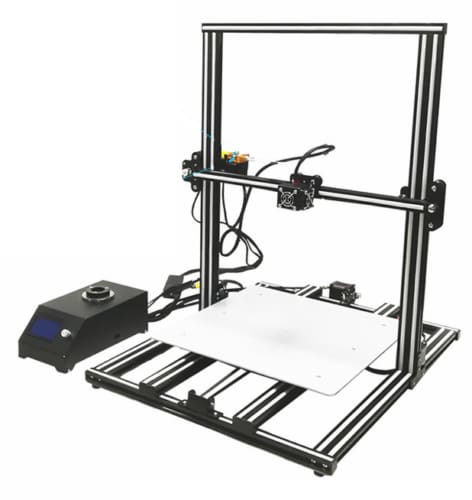
The Alfawise U10 is one of the pricier clones in this list, but for good reason. Its most obvious advantage is its larger build volume, mimicking that of the CR-10 S5. It also comes with a couple of smart features, such as a filament sensor and print resume. The only downside — and a pretty major one at that — is its less-than-capable print bed, which only heats up to a maximum of 50°C.
Raiscube R10

Although slightly more obscure, Chinese manufacturer Raiscube offers a number of Prusa i3 clones, including the R10, their CR-10 clone variation. Notable with this CR-10 clone is the stated layer resolution of 50 microns and the small build volume, which is on par with the CR-10 Mini.
SainSmart x Creality CR-10S

Like Raiscube, SainSmart’s 3D printer business model centers around cloning machines produced by others. They even incorporate competitors in their product names! (There’s also a SainSmart x Anet A8, for example.) Void of anything extra to offer, it’s a little strange that the price for this CR-10 clone is the same as for the original. Indeed, it would even appear that the SainSmart CR-10S‘s nozzle is less powerful. (It’s unlikely that a nozzle reaching only 250°C will print with PETG and TPU.)
License: The text of "8 Best Creality CR-10 Clone Alternatives of 2018" by All3DP is licensed under a Creative Commons Attribution 4.0 International License.
CERTAIN CONTENT THAT APPEARS ON THIS SITE COMES FROM AMAZON. THIS CONTENT IS PROVIDED ‘AS IS’ AND IS SUBJECT TO CHANGE OR REMOVAL AT ANY TIME.
